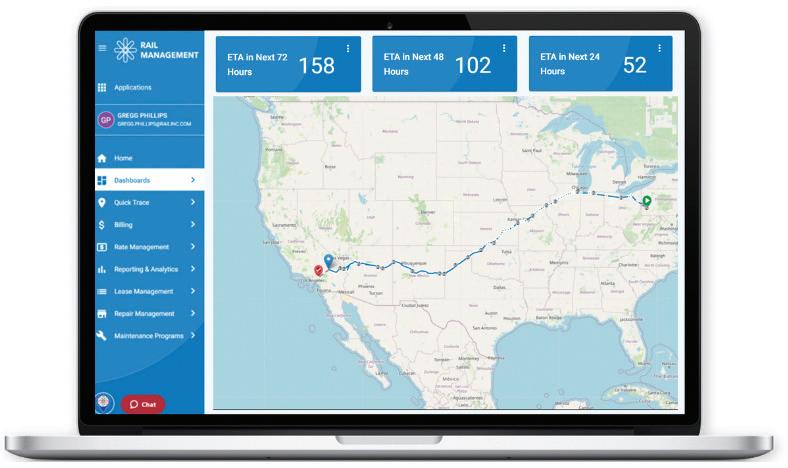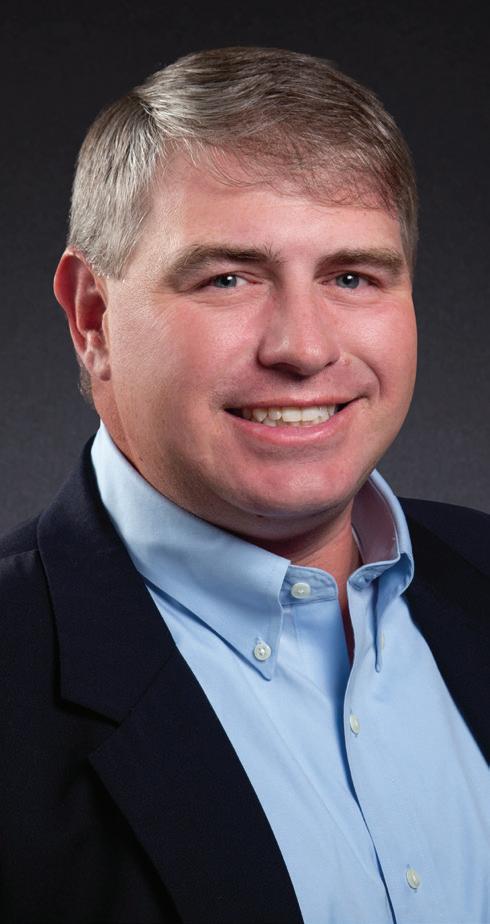Keeping the trains on track
Danny Dever is a senior product manager at TransmetriQ, and an expert on the tracking systems used by the US railroads to monitor the passage of freight along the nation’s tracks.
He explains that, typically, the US rail sector uses radio frequency identification (RFID) tags on railcars. When an RFID-equipped railcar passes an Automatic Equipment Identification (AEI) scanner along the track, it sends the location data back to Railinc, an organisation providing software, data and IT products that support the North American freight rail industry.
TransmetriQ is a Railinc Corp business unit and brand, the latter being the North American railroad industry’s resource for rail data, IT and information services. Railinc is the Association of America Railroads (AAR) side of the house, says Dever, offering
products primarily for the Class I and short line operators of the North American rail industry. (The AAR is a railroad policy, research, standard setting and technology
product designers, software developers and the like –serves the needs of individual rail shippers, car owners, and other parties.
The data collected by
organisation that focuses on the safety and productivity of the US rail freight industry.)
Railinc products are typically produced to serve the needs of the North American rail industry at large, while TransmetriQ – a group of Railinc transportation experts,
scanners reading the RFID tags is shared by Railinc with the railroad operators at no charge but it is also sold by TransmetriQ to shippers, private car companies and other customers for a fee. While individual railroad operators might potentially be able to
Aerios’ new air cargo IT capability goes for brokers
Simon Watson, one of the two original co-founders of digital air cargo charter broker CharterSync, has established Aerios, a new business that offers a tool which uses real-time data and artificial intelligence (AI) in a single digital solution for connecting brokers and carriers.
CharterSync says that Aerios is the first online platform to centralise air cargo charter operations and communications in a single tool. It is intended to improve charter-related operational decision-making while cutting down time spent on manual processes and repetitive tasks. It also facilitates real-time data analysis for informed decision-making from a request level through to more strategic planning while also enabling revenue optimisation, offering a new route to market that increases visibility on capacity and availability data.
The company says the tool
avoids the need for what has up to now been the norm in air cargo charter brokerage –disparate, non-integrated tools and processes.
Watson has moved on from CharterSync, and Aerios is a separate company. Aerios forms part of the CargoTech group of companies that aim to speed up the air freight industry’s digital
transformation.
“We created Aerios to fill a glaring gap in the air cargo charter industry,” Watson says. “Our software does more than just digitalise existing operations; it transforms them, giving access to operational data and market intelligence in real-time. This means fewer errors, faster and more informed decisions, allowing our clients to scale their operation in a cost-efficient manner, whilst driving for increased revenue.”
Watson tells FBJ that research and development for Aerios began through a series of workshops and interviews with carriers, brokers and charter professionals across a broad spectrum of the market.
This customer-led approach has given the Aerios team an “incomparable understanding” of customers’ existing processes and pain points, he says. “It has allowed Aerios to deliver a solution built around
sell that same information, it is the nationwide breadth of coverage that really sets Railinc apart, as well as specific operating data that it also provides – for example, when a railcar and its cargo arrives at its destination.
TransmetriQ has thousands of customers, Dever confirms, many of them the thousands of shippers by rail in the US.
RFID has been in use for many years, he notes, but new GPS-based technology might well be the future. Railcars so equipped can be plotted exactly at any time without the need to pass AEI scanners.
New technologies that are used with other modes such as air cargo and for perishables on the US rail system might also become much more prevalent – checking for temperature excursions, for example, or for impacts to the equipment.
TransmetriQ has undertaken a proof of concept programme
their needs and behaviours rather than being led by technology.”
The Aerios system seeks to tackle problems experienced by all those involved in the airfreight charter market, Watson confirms. And, in order to tackle these problems effectively and for Aerios to be successful and appeal to the whole air cargo charter market, it needed to be agnostic and neutral: “To this end, Aerios had to be a new independent business, allowing it to execute its own vision,” he notes by way of explanation for his own move away from CharterSync and into the new business.
CharterSync will, however, continue to offer its expertise as an air cargo charter broker, expand its services, and grow its team, Watson insists.
Watson lists what he sees as the key benefits of the Aerios system, which include: Less time spent on manual processes and repetitive tasks, so businesses can spend more time on relationship building and growth; increased efficiency and speed of response by digitising existing
on GPS technology and fed its results back to operators.
Meanwhile, TransmetriQ is also investing in new technologies such as machine learning (ML) and artificial intelligence (AI) to close shipment visibility gaps and to determine the most accurate possible estimated time of arrival (ETA) data for all those involved in the US railroad supply chain.
In February this year,
workflows and combining them into a single collaborative tool; minimising room for errors by connecting different communication channels into a single view accessible by the whole team; access to actionable data and market insights allowing users to make more informed decisions from a request level right through to more strategic planning; revenue and profit margins are optimised at the quotation stage using real-time market insights and AI-driven data; and real-time availability and
it announced that it had launched a demurrage management solution to offer rail shippers greater control of transportation costs. “Our new demurrage module is an enhancement to the TransmetriQ Platform which provides complete North American railcar management,” Dever informs. “In speaking with a variety of shippers, we found that many were struggling to manage demurrage with spreadsheets. Our solution tracks terminal capacity and estimates demurrage automatically, giving shippers the visibility to take action on cars incurring fees – ultimately leading to a reduction in demurrage costs.” And in summer last year, TransmetriQ launched a new fleet reporting tool – Reporting & Analytics – that synthesises asset location, health, and repair data to provide what it describes as “deeper fleet insights”. It features customisable, interactive dashboards and configurable alerts.
capacity will help all parties increase revenue and find new opportunities.
Aerios is currently accessible via the web and will be available on mobile devices soon. It will also offer the ability to integrate into carriers’ own operating systems as required, Watson says, adding: “Aerios will be releasing further products and developments over the coming months, starting with the carrier application that is currently in trial with a small number of alpha customers.”
Descartes buys
US logistics software company
Descartes Systems has acquired Windsor, UK-based BoxTop Technologies, for about £10.25 million.
BoxTop helps its customers manage secure and efficient movement of goods from quoting through to routing, booking, and final delivery and is already a Descartes partner, using the latter’s Global Logistics Network
for multimodal shipment visibility and to complete electronic customs filings.
Descartes’ chief executive, Edward Ryan, said the acquisition would help it deliver more value to manage the lifecycle of shipments and had been working successfully with BoxTop for a number of years, making this the next logical step in its partnership.



